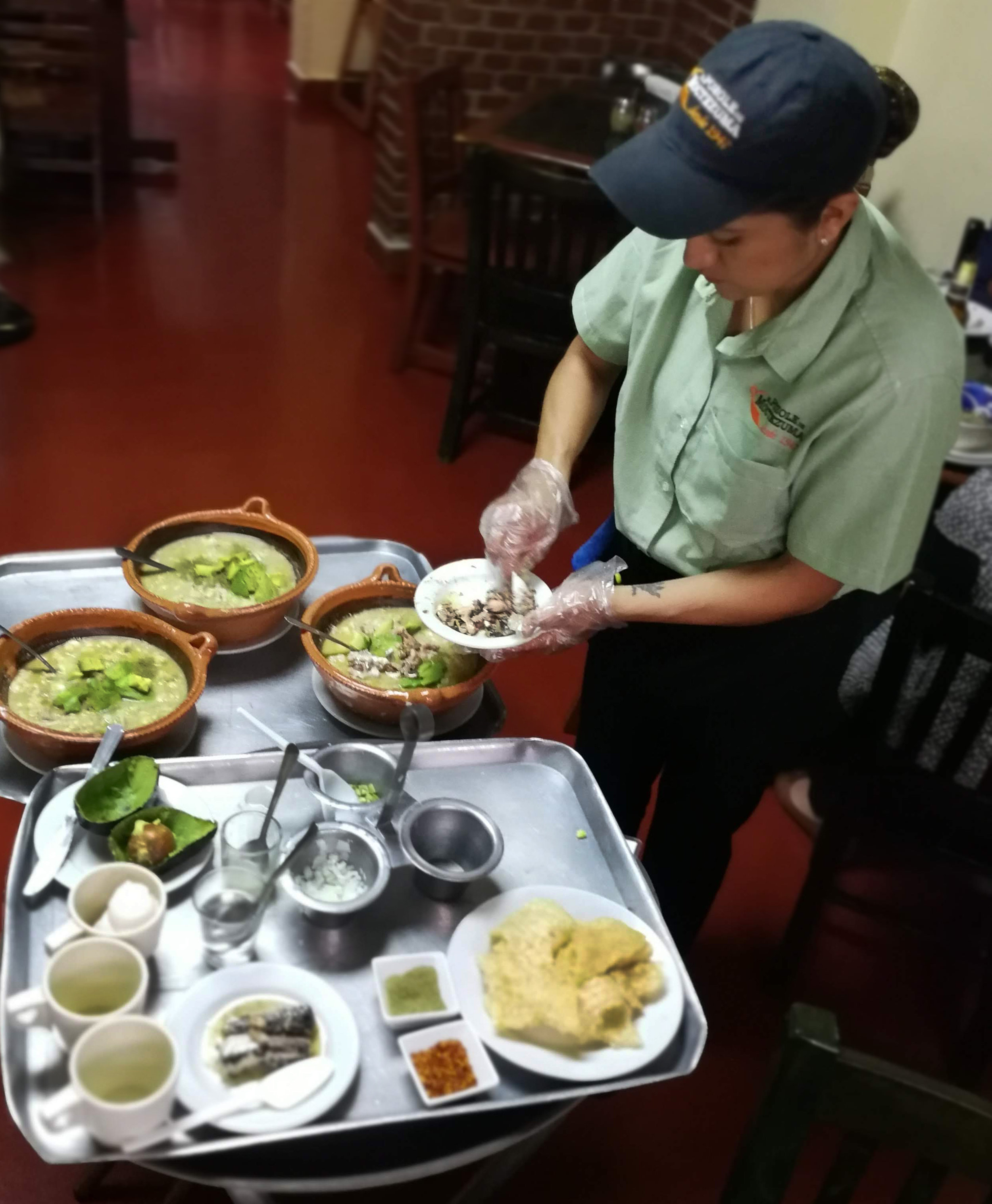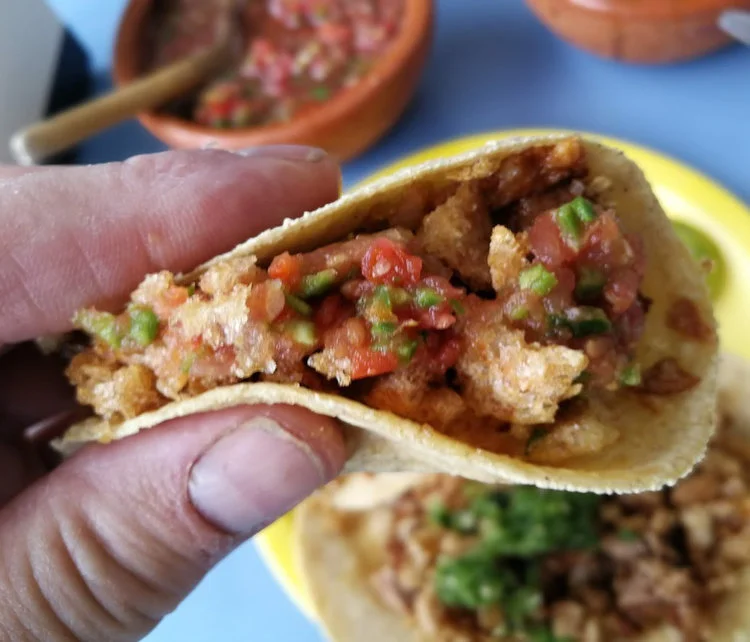And the Secret Password is: El Pozole de Moctezuma
To mis-quote humorist Will Rogers, I’ve never met a pozole I don’t like. I’ll travel far and wide for the uber-experience of that heart-warming, corn-filled multi-regional Mexican soup. For years I had heard vague rumors of the existence of a soup/speakeasy. El Pozole de Moctezuma is the kind of place students of the ‘real thing’ speak of with reverence, in tones usually used to describe a hidden chapel in Rome or a beloved neighborhood pizzeria in New York. Before Google let myriad cats out of bags, nobody would tell me where this temple to liquid gastronomy was. “It’s hidden,” they would say, smirking, “inside someone’s apartment.” And so it is.
Some 70 years ago, one doña Balvina Valle, who hailed from the state that surrounds Acapulco, began preparing her version of pozole and selling it from her kitchen. Word spread and her dining room eventually spawned a business. Instead of renting a streetside local, the family remained in the present day location, only expanding and renovating the space 20 or so years ago. Word spread, as it does when a good thing is involved.
Balvina’s descendents, four generations down the line, still produce what is arguably the finest and certainly the most elaborate pozole in the city.
I commence my first visit dauntlessly. The approach promises little; I wonder if I am in the right place: it’s an unadorned mid-century housing block at the corner of a quiet side street that branches aimlessly off of a colorless northern stretch of the Reforma. There’s no sign. I feel like I’ve been in this situation before, the time I went to Chez Wong in Lima, and not wishing to be left alone in a seemingly sinister neighborhood, went running down the street after the taxi that had deposited me in front of chef Wong’s unmarked abode. Or a wild goose-chase in Havana through people-less streets to find a strange little Indian restaurant. These two quests ended deliciously and I am sure Moctezuma will yield such results.
The word “pozole” handwritten on the buzzer, offers hope to the doubtful. Once admitted, a sign directs me through a drab residential lobby to what is now a bustling, cheery, full-fledged restaurant, complete with hostess, bar and framed accolades adorning the walls. It’s a speakeasy indeed, but all are welcome. The crowd appears to be made up of everyone and anyone: business men, local families, young and old couples and even a sprinkling of hipster escapees from Roma/Condesa.
Once seated I order the house special, pozole verde.
Pozole is a quintessentially Mexican comfort food--a soup fit for a king. It’s a hearty meat (usually pork) broth laced with chili and loaded with hominy (called cacahuazintle). The hominy is soaked in lime – nixtamalización - as for corn tortillas, which softens the kernels. Bowls are served and ceremoniously augmented and garnished by the diner. It is sometimes eaten at home, often for festive occasions such as fiestas pátrias – independence day. But mostly it is enjoyed at pozolerías, or at markets and street stalls.
a typical red pozole with all the trimmings
The word pozole comes from the Nahuatl ‘potzonti’ or ‘posolli’, meaning to boil or bubble, and versions of it are made all over Mexico. A similar thick soup was mentioned in the chronicles of the early Spanish missionary Fray Bernardino de Sahagún. He reported Moctezuma eating pozole that contained thigh meat from a sacrificed warrior in a ceremony honoring the sun god, Huitzilopotzli. Today’s version is usually made with pork (the pig’s head gives the best flavor, although simple meat and bones will do). There also exist chicken and seafood versions.
There are three main kinds of pozole in Mexico, red white and green like the flag, red being native to Michoacán and most common in the CDMX area. In the south-western state of Guerrero, green, thickened with pumpkin seeds, is the thing. And that’s where Moctezuma comes in, as only the plain ‘blanco’ and the verde are offered here.
My pozole arrives. While usually the protocol of garnishing the soup is do-it-yourself, here it’s a show. A cart is wheeled to the table, Caesar-salad-style, containing the steaming bowls of slow-cooked celadon-green soup, as well as the accompaniments. The server proceeds to crack and whisk in a raw egg, crush and incorporate fat oily sardines (for umami I suppose, but the fishyness is a bit much, even for me), oregano, onion, avocado, chicharrón. Te addition of a dollop of cream, extra chili powder and tostadas are left up to me. The portion is enormous. The nutty, meaty richness is almost overbearing. I like this place and will be back. Everybody here is in on the delicious secret and nobody leaves hungry. I eat half a bowl and take the rest home for later.
My grandmother would be happy.
El Pozole de Moctezuma
Calle Moctezuma 12, colonia Guerrero see map
Tel. 55 5526 7448
Open Monday - Saturday 2-7 p.m.











